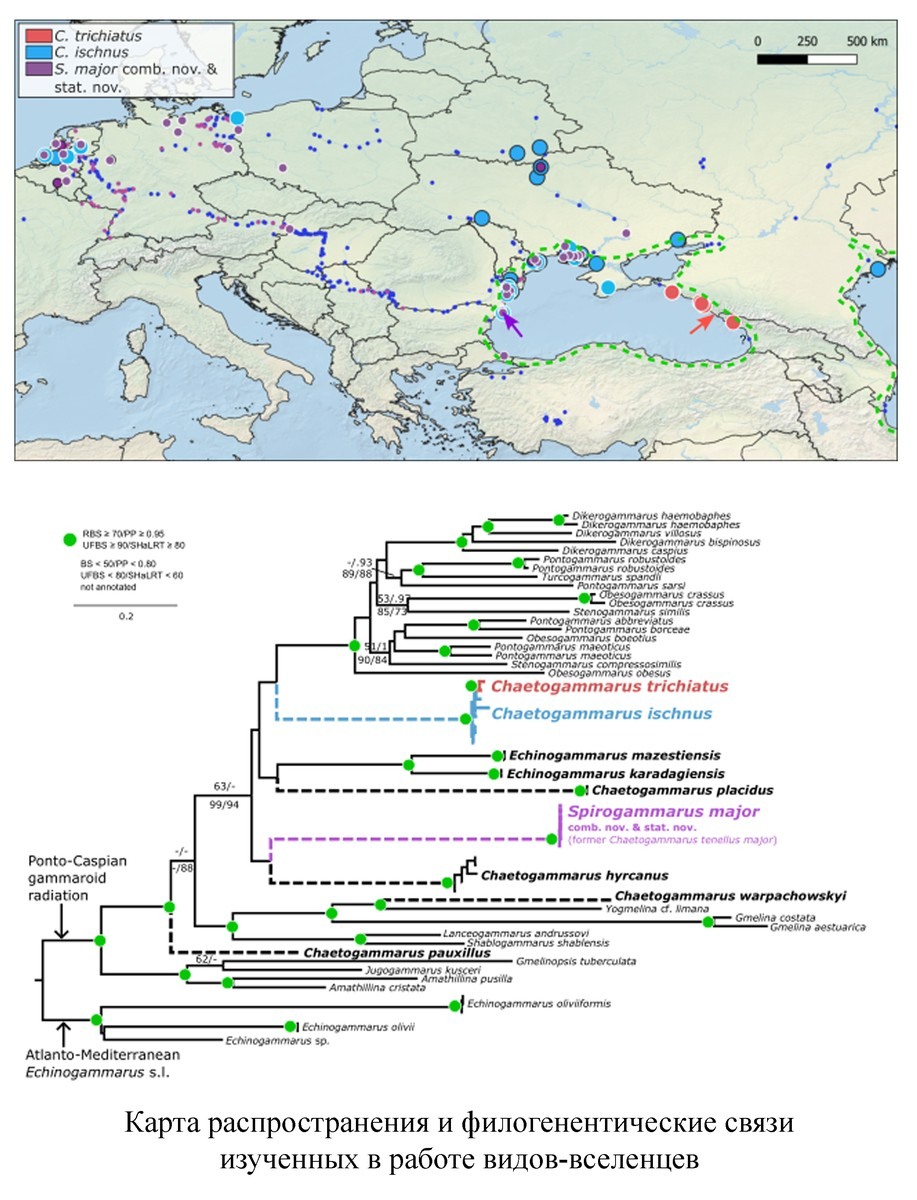
Amphipod crustaceans are one of the most diverse groups of Ponto-Caspian taxa, including over 96 known endemic species, of which 82 belong to the large, apparently monophyletic clade Pontogammaridae. These animals display astonishing diversity in terms of morphology and ecology, very similar to the diversity of amphipods from the famous Lake Baikal.
Many of these amphipods are known invasive species that are spreading rapidly throughout Europe and beyond. However, the taxonomy for many ecosystem-important species remains unclear.
Using an integrative approach, an international team of scientists, which included specialists from the Institute of Ecology and Evolution of the Russian Academy of Sciences, studied the taxonomy of the invasive amphipod Trichogammarus trichiatus, which has recently become widespread in the inland waters of Europe. The article was published in the international Zoological Journal of the Linnean Society (Q1 WOS). The study clarified the taxonomic status of species of the genus Trichogammarus and revealed that the widespread invader Spirogammarus major (formerly known as Chaetogammarus tenellus major) has been misidentified as Chaetogammarus/Echinogammarus trichiatus in European inland waters for more than half a century.
Chaetogammarus trichiatus was originally described by Russian scientist Martynov in 1932 from the northeastern coast of the Black Sea. A similar taxon, Chaetogammarus tenellus major, was described by the Romanian scientist Caraushu from the western Black Sea in 1943, which was later included in the synonymy of C. trichiatus. In doing so, Chaetogammarus trichiatus was moved between Chaetogammarus and the Atlanto-Mediterranean Echinogammarus, currently classified in the genus Trichogammarus.
The obtained molecular genetic data (six DNA markers), as well as studies of the morphology of the studied species using light and scanning electron microscopy, showed that T. trichiatus and C. tenellus major are completely different species. Moreover, the first is endemic to the Caucasus, while the second is distributed along the western coast of the Black Sea and has invaded Europe. The latter species was also transferred to the new genus Spirogammarus. Multilocus molecular phylogeny has also shown that the genus Chaetogammarus is polyphyletic, meaning that it must be divided into additional genera.
The authors also propose using a similar approach to assessing other ecologically significant invasive species. The present study highlights the importance of integrating multilocus DNA sequences, morphometry, and biogeography to elucidate the status of taxonomically complex groups such as gammarid amphipods.
Related materials:
